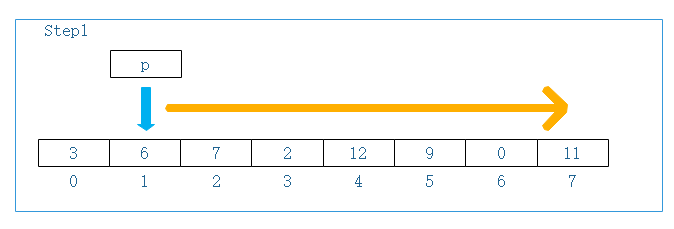参考:
1. 顺序查找 | 博客园
基本思想:
顺序查找,就是从第一个元素开始,按索引顺序遍历待查找序列,直到找出给定目标或者查找失败。
特点:
1. 对待查序列(表)无要求 -- 待查找序列可以是有序,也可以是无序;
2. 从第一个元素开始;
3. 需要逐一遍历整个待查序列(除非已经找到);
4. 若查找到最后一个元素还没找到,则查找失败;
扫描二维码关注公众号,回复:
3106433 查看本文章


缺点:
效率低 -- 需要遍历整个待查序列
时间复杂度:
O(n),平均查找时间 = 列表长度/2
空间复杂度:
1个待查序列+1个目标元素 <=> O(n)
看一组示例,从一组数据[3,6,7,2,12,9,0,11]中查找12,
初始状态:指针p指向列表第一个元素,即索引为0元素,开始向右滑动,以匹配、查找目标

Step1:p指针开始向右滑行一个单位,进行比较

Step2,3,直到4:查找到元素12,匹配目标12成功,索引=4

示例代码
data = [3,6,7,2,12,9,0,11] """ sequence search """ def seqsearch(array, target): i = 0 for i in range(len(array)): element = array[i] if element == target: print 'sucess to find out %d from array, index=%d'%(target, i) return i print 'fail to find out the target' return -1 print seqsearch(data, 12) #sucess to find out print seqsearch(data, 8) #fail to find out
运行结果
sucess to find out 12 from array, index=4 4 fail to find out the target -1